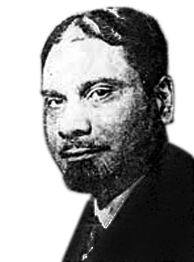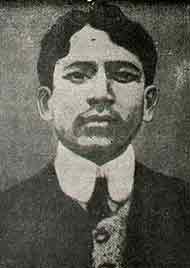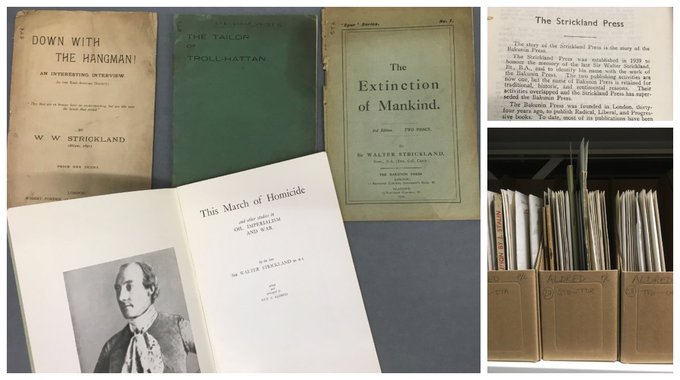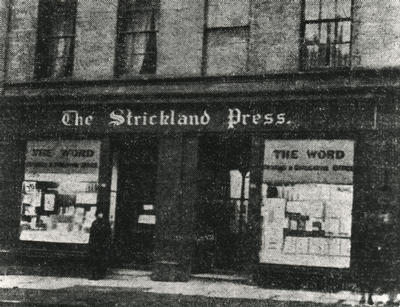A revolutionary to the core
Vinayak Damodar Savarkar was convicted for the murder of A.M.T. Jackson, Collector of Nashik district, and sent to the cellular jail in Andamans in 1911. This was the only murder he had conspired to commit for which he was punished.
He was implicated in the other three: Sir William Hutt Curzon Wyllie of the India Office on 1 July 1909; attempted murder of the Acting Governor of Bombay, Ernest Hotson, in 1931; and Gandhi’s on January 30, 1948. In each case, the trigger was pulled by an assassin associated with Savarkar.
Savarkar went to study Law in London in 1906. He published Mazzini Charitra in the same year, an adaptation of the Italian radical Mazzini’s works with a 25-page preface. The book was released in Maharashtra in June 1907, and the first 2,000 copies sold out in less than a month.
Giuseppe Mazzini (1805 – 1872), an Italian politician, journalist, and activist for the unification of Italy, led the Italian revolutionary movement. His efforts helped bring about an independent and unified Italy in place of the several separate states, many dominated by foreign powers, that existed until the 19th century. An Italian nationalist in the historical radical tradition, Mazzini helped define the modern European movement for popular democracy in a republican state.
Mazzini's thoughts had a very considerable influence on political leaders, among them American president Woodrow Wilson and British prime minister David Lloyd George as well as post-colonial leaders such as Mahatma Gandhi, Veer Savarkar, Golda Meir, David Ben-Gurion, Kwame Nkrumah, Jawaharlal Nehru and Sun Yat-sen.
 |
Savarkar
|
After the book, Savarkar completely embraced Mazzini’s secret organizations and guerrilla warfare strategies. He distributed insurgent propaganda in London and sent frequent newsletters to his Indian comrades.
Savarkar and his brother Ganesh founded the secret revolutionary group Abhinav Baharat Society in 1904, and its modus operandi was revealed during the inquiry into the killing of AMT Jackson, Magistrate of Nashik. Savarkar was discovered to have sent twenty Browning handguns to India, including one used in Jackson’s assassination.
The assassination of AMT Jackson
Arthur Mason Tippetts Jackson (1866 – 1909), a British officer in the Indian Civil Services, was a learned Indologist and a historian, who was popularly known as Pandit Jackson. He was the Magistrate of Nashik when he was murdered by Anant Laxman Kanhere and the trial in the case led to the arrest and deportation of Savarkar.
Anant Kanhere, an 18-year-old student of Aurangabad, shot Jackson on 21 December 1909 at a theatre where a drama was to be staged in his honour on the eve of his transfer. Jackson was shot dead as he had committed Ganesh (Babarao) Savarkar, elder brother of V D Savarkar, to trial. He was also instrumental in Ganesh getting arrested.
The murder created a great deal of sensation in Nashik, Pune and Mumbai and it even created consternation in the ranks of Indian nationalists, as Jackson was known to be sympathetic to India. At the same time, Jackson was aware of activities carried out by the Abhinav Bharat Society which were "seditious", as defined by the British Indian government.
 |
Jackson
|
The arrest of Babarao Savarkar for printing a 16-page book of songs of Kavi Govind and his prosecution was the last straw. A group headed by Krishnaji Karve decided to eliminate Jackson in the first month of 1910.
However, by the end of 1909, Jackson was promoted to the post of Commissioner of Mumbai. Krishnaji Karve, Vinayak Deshpande, and Anant Kanhere decided to eliminate Jackson before his transfer. People in Nashik arranged a farewell for Jackson at Vijayanand theatre and staged a drama, Sangeet Sharada, in his honour. Anant decided this was the time to execute their plan. He took responsibility for killing Jackson and decided to commit suicide by poison to avoid capture and save his partners.
The backup plan was that Vinayak was going to shoot Jackson if Anant's attempt failed. If both these failed, Karve was also carrying a weapon. On 21 December 1909, as Jackson came to see the play, Anant jumped in front of him and shot four bullets. Jackson was killed immediately. One of the Indian officers, Palshikar and former DSP Marutrao Toradmal, attacked Anant with a baton. Other people around caught Anant and he was not able to shoot himself or get the poison.
Kanhere was prosecuted in Bombay court and hanged in the Thane prison on 19 April 1910, a mere four months after Jackson was killed. Along with him, Karve and Deshpande were also hanged. The other accused in the case Shankar Ramchandra Soman, Waman alias Daji Narayan Joshi and Ganesh Balaji Vaidya were given Transportation of Life (Life imprisonment) punishment and Dattatraya Pandurang Joshi was sent to two years rigorous imprisonment.
 |
Karve, Kanhare, Deshpande
|
None of the relatives of these three was present during the execution. Their bodies were burnt by the prison officers, and the ash left after the body is burnt was also not handed over to their relatives but was thrown in the sea near Thane.
The murder was an important event in the history of Nashik and the Indian revolutionary movement in Maharashtra.
Kanhere was born on 7 January 1892 in Aayani (Anjani), a small village in Khed, Ratnagiri in a Brahmin family. He completed his primary education in Nizamabad which was then also called Indur, and his English education took place in Aurangabad. In 1908, Kanhere returned to Aurangabad where he met with Ganesh (Ganu) Balaji Vaidya, a member of Abhinav Bharat.
Jackson was aware of these activities. He started mixing with people, unlike other British officers. He told people that he was a Vedic-literate Brahmin in his previous life and that was why he felt affection towards the Indian people. He used to talk to people in Marathi and had knowledge of Sanskrit.
The assassination of Curzon Wyllie
Curzon Wyllie (1848 – 1909), a British Indian army officer, and later an official of the British Indian Government, was assassinated the same year, on 1 July 1909 in London by the Indian revolutionary Madan Lal Dhingra, who was a member of India House in London.
Over a career spanning three decades, Wyllie rose to be a Lieutenant Colonel in the British Indian Army and occupied several administrative and diplomatic posts. He was a British resident of Nepal and the Princely state of Rajputana, and later, the political aide-de-camp to the Secretary of State for India, Lord George Hamilton.
Wyllie, born at Cheltenham to General William Wyllie (1802 – 1891) and his wife, Amelia (1806 – 1891), was the third and youngest son of five children. He was educated at Sandhurst before joining the army in October 1866, subsequently arriving in India in 1867.
Arriving in India in February 1867, Wyllie was promoted to lieutenant in October 1868 and joined the Indian staff corps in 1869. He was posted to the 2nd Gurkha regiment for a year. In 1870, Wyllie was selected for civil and political employment and appointed to the Oudh commission.
Wyllie was promoted to captain in October 1878 and transferred to the foreign department in January 1879, serving as cantonment magistrate of Nasirabad, assistant commissioner in Ajmer-Merwara, and subsequently as the assistant to Sir Robert Groves Sandeman, the governor-general's agent in Baluchistan.
 |
Curzon Wyllie
|
He was part of Major-General Sir Robert Phayre's contingent in the Second Anglo-Afghan War when his actions earned him mentions in the Viceroy's dispatches. After the war, Wyllie was appointed the military secretary to the governor of Madras, William Patrick Adam (later also his brother-in-law) from December 1880 until Adam's death in the following May. On 29 December 1881, Wyllie married Katharine Georgiana Carmichael (1858 — 1931), the second daughter of David Fremantle Carmichael of the Indian Civil Service. He was promoted to Major in October 1886 and to Lieutenant Colonel in 1892.
Wyllie served as the private secretary to acting governor William Huddleston till November 1881, subsequently overseeing the affairs of Malhar Rao Gaekwar of Baroda before taking the post of assistant resident at Hyderabad from December 1881 to November 1882. Through the next 14 years, Wyllie served in political and government posts in several different places, mostly in Rajputana.
During this time he oversaw relief for the famine of 1899-1900. Between 1893 and 1899, Wyllie was the officiating resident in Nepal when in February 1898 he was selected as the agent to the governor-general in central India. In May 1900 he was transferred in the same capacity to Rajputana, where he remained for the rest of his service in India.
In March 1901 Wyllie returned to Britain on being appointed the political aide-de-camp to Lord George Hamilton, the Secretary of State for India. He oversaw the arrangements for the Indian princes visiting for the coronation of King Edward VII in August 1902.
At this time, he was also involved in affairs relating to Indian students in Britain, as well as overseeing the Indian nationalist opinion that was finding a voice in Britain at the time. Wyllie was head of the Secret Police and collected a lot of information about Savarkar.
Richard James Popplewell (1995) in the book, Intelligence and imperial defence: British intelligence and the defence of the Indian Empire, 1904-1924, quotes The Indian Sociologist as describing Wyllie and Lee Warner "as early as October 1907" as "old unrepentant foes of India who have fattened on the misery of the Indian peasant every (sic) since they began their career".
This prompted Savarkar's group to eliminate him, and Wyllie was assassinated in by Dhingra at the Imperial Institute, South Kensington, where he and his wife attended an event organised by the National Indian Association. Dhingra fired at Wyllie with a revolver, killing him instantly, and mortally wounding Dr Cawas Lalcaca, a Parsi physician from Shanghai, who attempted to come to Wyllie's aid and stop Dhingra. Dhingra was sentenced to death in July 1909 and hanged at Pentonville Prison on 17 August 1909.
Dhingra (1889-1909) was an Indian student at the University of London who had close ties with the nationalist India House and The Indian Sociologist. Dhingra was born in an educated and affluent Hindu Punjabi Khatri family in Amritsar, India. His father, Dr Ditta Mal Dhingra, was a civil surgeon, and Madan Lal was one of eight children (seven sons and one daughter). All seven sons, including Dhingra, studied abroad.
At the Lahore Government College University, Dhingra was influenced by the incipient nationalist movement, which at that time was about seeking Home Rule rather than independence. Troubled by the poverty in India, Dhingra studied the causes of poverty and famines extensively and felt that the key issues in seeking solutions to these problems lay in Swaraj (self-government).
Dhingra embraced with particular fervour the Swadeshi movement, which aimed to increase India's self-sufficiency by encouraging Indian industry and entrepreneurship and boycotting British and other foreign goods. He found that the industrial and fiscal policies of the colonial government were designed to suppress local industry and favour the purchase of British imports, which he felt was a significant reason for the lack of economic development in India.
 |
Dhingra
|
In 1904, as an MA student, Dhingra led a student protest against the principal's order to have the college blazer made of cloth imported from Britain, for which he was expelled from the college. His father, who held a high, well-paying position in government service and had a poor opinion of agitations, told him to apologise to the college management, not to participate in such activities again, and revoke the expulsion.
Dhingra refused and chose not even to go home to discuss matters with his father, but to take a job and live as per his own wishes. Thus, following his expulsion, Dhingra took a job as a clerk at Kalka at the foot of the Shimla hills, in a firm that ran a Tanga carriage service to transport British families to Shimla for the summer months.
After being dismissed for insubordination, he worked as a factory labourer. Here, he attempted to organise a union but was sacked. He moved to Bombay and worked there for some time, again at low-level jobs. By now, his family was seriously worried about him, and his elder brother, Dr Bihari Lal, compelled him to go to Britain to continue his higher education. Dhingra finally agreed, and in 1906, he departed for Britain to enrol at University College, London, to study mechanical engineering.
Dhingra arrived in London a year after the foundation of Shyamji Krishna Varma's India House in 1905, a meeting place for Indian revolutionaries located in Highgate. He came into contact with Savarkar and Varma, who were impressed by his perseverance and intense patriotism. Savarkar inspired Dhingra. He joined and had a membership in the Abhinav Bharat Society. Dhingra was known to frequent a shooting range on Tottenham Court Road.
During this period, Savarkar, Dhingra, and other student activists were outraged by the 1905 Partition of Bengal. Dhingra was disowned for his political activities by his father, Ditta Mall, who was the Chief Medical Officer in Amritsar. His father went so far as to publish his decision in newspaper advertisements.
Several weeks before assassinating Wyllie, Dhingra had tried to kill George Curzon, Viceroy of India. He had also planned to assassinate the ex-Governor of Bengal, Bampfylde Fuller, but was late for a meeting the two were to attend, and so could not carry out his plan. Dhingra then decided to kill Wyllie.
On the evening of 1 July 1909, Dhingra, along with a large number of Indians and Englishmen had gathered to attend the annual 'At Home' function hosted by the Indian National Association at the Imperial Institute. When Wyllie was leaving the hall with his wife, Dhingra fired five shots right at his face, four of which hit their target. Dr Cawas Lalcaca died of Dhingra's sixth and seventh bullets, which he fired because Lalcaca had come between them. Dhingra was arrested on the spot.
Dhingra was tried in the Old Bailey on 23 July. He represented himself during his trial but did not recognize the court's legitimacy. He stated that his assassination was done in the name of Indian independence and that his actions were motivated by patriotism. He also stated that he had not intended to kill Cawas Lalcaca. He was sentenced to death.
While he was being removed from the court, he said to the Chief Justice – "Thank you, my Lord. I don't care. I am proud to have the honour of laying down my life for the cause of my motherland." (1)
At a public meeting held on 5 July 1909, several Indian political leaders condemned the murder of Wyllie. Still, Savarkar voted against the formal resolution to condemn Dhingra, arguing that proper voting procedure had not been followed at the meeting and that he wanted Dhingra to be "treated fairly before being condemned as a criminal". (2) After Dhingra's execution, the Abhinav Bharat Society printed a postcard portraying Dhingra as a revolutionary. Savarkar's comrade V. V. S. Aiyar described the murder as "a glorious act", and praised Savarkar for being "the real guru, the Avatar of Krishna, who had produced a man like Dhingra."
After Dhingra went to the gallows, The Times of London wrote an editorial on 24 July 1909, titled "Conviction of Dhingra". The editorial said, "The nonchalance displayed by the assassin was of a character which is happily unusual in such trials in this country. He asked no questions. He maintained a defiance of studied indifference. He walked smiling from the Dock."
The third case in which Savarkar got implicated related to the attempt on the life of Ernst Hotson, Home Member and Acting Governor of Bombay.
Attempt on Ernst Hotson
Ernest Hotson, on whom an assassination attempt was made by an associate of Savarkar, was saved by his bulletproof vest.
Sir John Ernest Buttery Hotson (1877 – 1944) was an administrator in India during the British Raj. Born in Glasgow, he joined the Indian Civil Service, being appointed Superintendent of Managed Estates in Kathiawar. His entire career was devoted to the administration of the Bombay Presidency, and his positions included Under-Secretary to the Government of Bombay (Political and Judicial Departments), 1907; Collector, 1920; Secretary of the Political Department, 1922; Chief Secretary to the Government, 1924; Member of the Executive Council (MEC) of Bombay, 1926–31. He rose to become a Home Member and Acting Governor of Bombay, in 1931, when an attempt was made on his life.
After the arrest of the national leaders Khurshed Nariman and Jamnalal Bajaj on 8 May 1930, mass demonstrations in the district of Sholapur led the Collector, Henry Knight, to seek advice from Hotson who was now in Bombay as the Home Member. The visit resulted in the imposition of martial law on 12 May. Martial law was lifted on 30 June, however, a year later, on 22 July 1931, as Acting Governor of Bombay in the period after the departure of Sir Frederick Sykes, Hotson was visiting the library of Ferguson College in Pune, when one of the students, Vasudeo Balwant Gogte (Gogate), attempted to assassinate him. The bullet was stopped by a metal stud on Hotson's clothes, and he escaped unharmed.
 |
Hotson
|
When asked why he had shot at the Home Member, Gogte is reported to have said, "As a protest against your tyrannical administration".
Vasudev Gogte (1919-1949), born in Miraj, Satara, was a follower of Bhagat Singh, Sukhdev and Rajaguru. He was an active member of the Hindu Maha Sabha and was deeply influenced by Savarkar’s philosophy.
While a Law student at Ferguson College, Pune, on 16 May 1936, he witnessed 16 innocent citizens being hanged due to violation of Martial law. As a result, he made an attempt on Governor Hoston, for ordering capital punishment. Gogte was imprisoned for seven years and released in 1937. During the trial, it was learnt that Hoston was protected from both the bullets that hit his chest because of the leather purse carried in the inner pocket of the coat.
Gogte, after graduating in Law started practising but was arrested in 1948 on charges of conspiracy for the assassination of Gandhi. He was also elected a member of Pune Municipality and later become its Chairman. Later he went on to become the leader of the Opposition in the Maharashtra legislative council. It was due to his effort Vasudev Balwant Phadke's memorial was constructed. He died on 26 November 1949.
 |
Gogte
|
Remarkably, Hotson did not merely agree to Gogate's early release from Jail, he sent him a cheque for Rs. 100 as a token of goodwill and the hope that it would enable the young man to establish himself in a profession.
Mercy petitions
A lot of hue and cry is seen and heard nowadays about Savarkar's apologies and mercy petitions to the British authorities. Any youngster of that day would have resorted to this strategy- N E Balaram, the Communist leader had apologised to the British government, and it is there in Madras archives. K C Mammen Mappillai, who built Malayala Manorama, had apologised to the Travancore government, to set him free, after he landed in jail after a Bank scam.
Savarkar was lodged in the Cellular Jail on July 4, 1911. Within six months, he submitted a petition for mercy. In October 1913, the Home Member of the Viceroy’s Executive Council, Sir Reginald Craddock, visited the Jail and met Savarkar among others. His note of November 23, 1913, recorded Savarkar’s pleas for mercy. Savarkar submitted his second mercy petition on November 14, 1913.
On March 22, 1920, a Savarkar supporter, G.S. Khoparde, tabled questions in the Imperial Legislative Council, one of which read: “Is it not a fact that Mr Savarkar and his brother had once in 1915 and at another time in 1918 submitted petitions to Government stating that they would, during the continuance of the war, serve the Empire by enlisting in the Army, if released, and would, after the passing of the Reforms Bill, try to make the Act a success and would stand by law and order?” (3)
The Home Member Sir William Vincent replied: “Two petitions were received from Vinayak Damodar Savarkar - one in 1914 and another in 1917, through the Superintendent, Port Blair."
Vincent was not accurate-there was one in 1917 besides that of 1913. There is also a document dated March 30, 1920. On that day, Savarkar begged for “the last chance to submit his case before it is too late”. Vincent disclosed that Savarkar had recovered from dysentery five months earlier. His life was not in danger.
 |
| Document on the rejection of Savarkar's mercy petition |
In that mercy petition, Savarkar said: "So far from believing in the militant school of the type, I do not contribute even to the peaceful and philosophical anarchism of a Kuropatkin [sic.] or a Tolstoy (4). And as to my revolutionary tendencies in the past: it is not only now for the object of sharing the clemency but years before this have I informed of and written to the Government in my petitions (1918, 1914) about my firm intention to abide by the constitution and stand by it as soon as a beginning was made to frame it by Mr Montagu. Since that the Reforms and then the Proclamation have only confirmed me in my views and recently I have publicly avowed my faith in and readiness to stand by the side of orderly and constitutional development.”
Savarkar concluded: “I and my brother are perfectly willing to give a pledge of not participating in politics for a definite and reasonable period that the Government would indicate...This or any pledge, e.g., of remaining in a particular province or reporting our movements to the police for a definite period after our release - any such reasonable conditions meant genuinely to ensure the safety of the State would be gladly accepted by me and my brother.”
As I said, such petitions during the Raj, were normal for any Indian to get freed, and to be in the midst of the freedom movement. We should well remember that P C Joshi the Communist Party Secretary, was a British agent during the 1942 Quit India movement, and Savarkar was never a British spy.
______________________________
1. General Register Office, "England and Wales Death Registration Index 1837–2007
2. Vinayak Chaturvedi (2022), Hindutva and Violence: V. D. Savarkar and the Politics of History. Suny Press. pp. 80–81.
3. Quotes from A G Noorani's article, Savarkar's Mercy Petition, Frontline, April O8, 2005
4. Aleksey Nikolayevich Kuropatkin (1848 – 1925) served as the Russian Imperial Minister of War from January 1898 to February 1904 and as a field commander subsequently. Historians often hold him responsible for major Russian defeats in the Russo-Japanese War of 1904 to 1905, most notably at the Battle of Mukden (1905) and at the Battle of Liaoyang (August-September 1904).
© Ramachandran





















